Geomagnetic storm in progress!
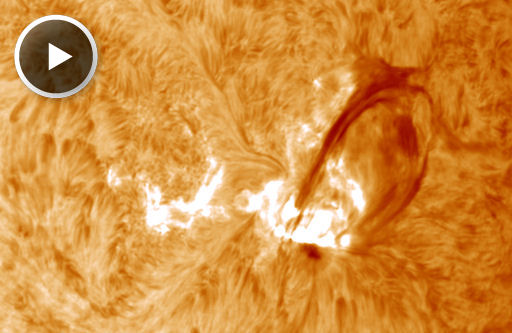
A polar geomagnetic storm (Kp=5) is in progress following the impact of a CME around 1100 UT on Sept. 9th. This could be the first of several hits from a series of CMEs expected to reach Earth during the weekend. High-latitude sky watchers should be alert for auroras after nightfall.
ALERT: Geomagnetic K-index of 6
Threshold Reached: 2011 Sep 09 1700 UTC
Synoptic Period: 1500-1800 UTC
Station: Boulder
Active Warning: Yes
NOAA Scale: G2 – Moderate
Electrical ground currents caused by the storm have been detected in Norway.
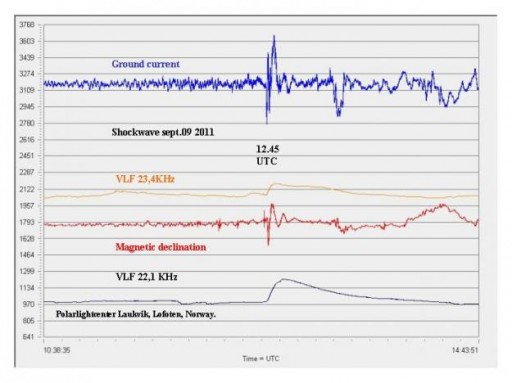
Solar wind
speed: 505.1 km/sec
density: 2.1 protons/cm3
The Radio Sun
10.7 cm flux: 110 sfu
Planetary K-index
Now: Kp= 5 storm
24-hr max: Kp= 5 storm
Interplanetary Mag. Field
Btotal: 18.1 nT
Bz: 10.4 nT south
Alerts / Bulletins
Latest Alert: Sep 09 1701 UTC ALERT: Geomagnetic K-index of 6
Last Advisory Bulletin: Sep 06 2344 UTC: Strong Radio Blackout Event
NOAA Scales Activity |
||
|
Range 1 (minor) to 5 (extreme)
|
||
|
NOAA Scale
|
||
| Geomagnetic Storms * | ||
| Solar Radiation Storms | ||
| Radio Blackouts | ||
A series of coronal mass ejections (CMEs) propelled toward Earth by the recent eruptions of sunspot 1283 will deliver glancing blows to Earth’s magnetic field on Sept. 9th – 11th. High-latitude sky watchers should be alert for auroras in the nights ahead.
Sunspot 1283 is producing flares so intense they are visible through solar telescopes in backyards 93 million miles away.
The magnetic canopy of sunspot 1283 has an unstable “beta-gamma-delta” configuration tthat harbors energy for more powerful eruptions. NOAA forecasters estimate a 75% chance of M-flares and a 25% chance of X-flares during the next 24 hours. (SpaceWeather)
A solar wind stream flowing from the indicated coronal hole should reach Earth on Sept. 11-12.
Joint USAF/NOAA Report of Solar and Geophysical Activity SDF Number 251 Issued at 2200Z on 08 Sep 2011
IA. Analysis of Solar Active Regions and Activity from 07/2100Z to 08/2100Z:
Solar activity was high. Region 1283 (N16W42) produced two major flares. The first was an X1/3b at 07/2238Z associated with weak Types II and IV radio sweeps, a 1300 sfu Tenflare, and a non-Earth-directed CME. The second was an M6/1n at 08/1546Z associated with a weak Type IV radio sweep. Region 1283 maintained a weak delta magnetic within the northern portion of its leader spots and showed trailer
spot development during the period. Region 1289 (N21E51) also showed trailer spot development during
the period. No new regions were numbered.IB. Solar Activity Forecast:
Solar activity is expected to be moderate during the period (09 – 11 September) with a chance for another X-class flare from Region 1283.
IIA. Geophysical Activity Summary 07/2100Z to 08/2100Z:
Geomagnetic field activity was at quiet levels. The greater than 2 MeV electron flux at geosynchronous orbit reached high levels during the period.
IIB. Geophysical Activity Forecast: Geomagnetic field activity is expected to be at quiet levels until late on day 1 (09 September). Activity is expected to increase to unsettled levels late on 09 September with a chance for active levels due to a CME arrival. A further increase to unsettled to active levels with a chance for minor storm levels is expected on day 2 (10 September) as the CME passage continues. A decrease to unsettled levels is expected on day 3 (11 September). There will be a chance for a greater than 10 MeV proton event at geosynchronous orbit on day 1.
III. Event Probabilities 09 Sep-11 Sep
Class M 75/70/65
Class X 25/20/15
Proton 20/15/10

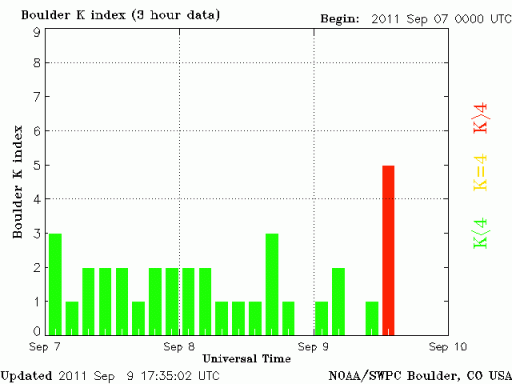
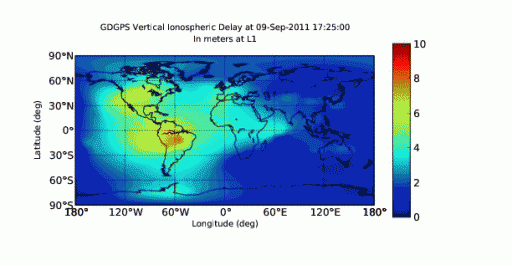
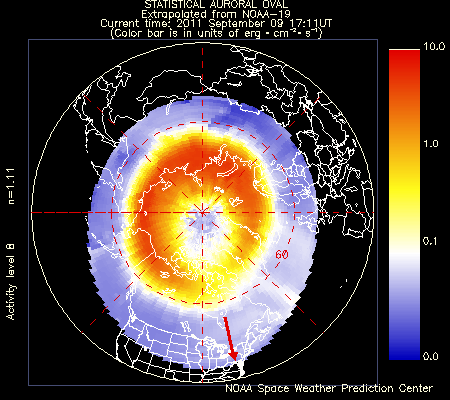
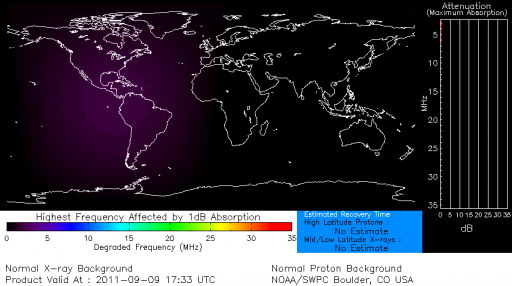
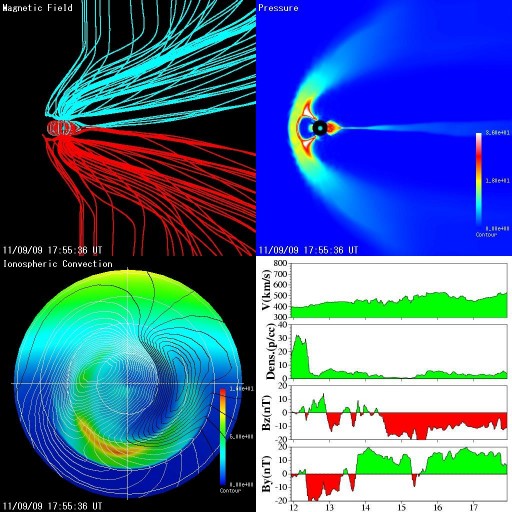
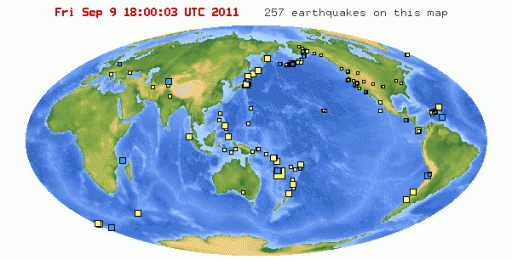
Commenting rules and guidelines
We value the thoughts and opinions of our readers and welcome healthy discussions on our website. In order to maintain a respectful and positive community, we ask that all commenters follow these rules.